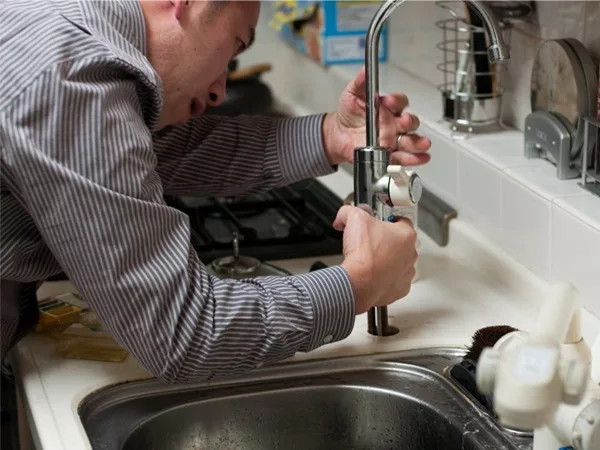Home Improvements: Know When to Call a Pro

America is a land of devoted do-it-yourselfers. On any given weekend, homeowners tackle all sorts of jobs, from changing their oil to building a deck. Sometimes, however, hiring a professional is the right way to go. This is especially true when the project requires specialized tools or training.
Here are a few jobs within reach of the average homeowner — as well as some for which it’s best to call a pro.
Kitchen and Bathroom Projects
There are a few areas of the home that are popular choices for remodeling. Which aspects of the work can you do yourself?
Let’s take a closer look at some everyday tasks:
- Painting. Whether you’re doing a simple touch-up or updating to a whole new color scheme, paint jobs are usually within the skills of the average Jane or Joe. You should consider hiring a pro, however, if you suspect the presence of lead-based paint.
- Hardware replacement. Adding or upgrading drawer pulls, cabinet handles, or grab bars is relatively straightforward, as are most floor or wall tiling jobs. Contact a professional if you plan to gut existing cabinetry, install wall-mounted mirrors, or replace fixtures like sinks or toilets.
- Major surgery. Any job requiring altering or expanding the room’s size or shape calls for professional skills, as does any project requiring added plumbing or wiring.
When looking for a home remodeling company, turn to online search sites like www.Angi.com to find contractors with high ratings. Some of the best companies will have an Angi Certified tag and a Super Service Award. Many of these contractors even offer special deals.
Adding a Deck or Patio
Building a classic rectangular deck requires basic carpentry skills and reasonably good physical health. So-called “floating decks” may save you money and limit wear-and-tear on your knees and back. Contact a pro if the deck you envision requires specialized cuts, like oval, octagonal, and hexagonal shapes.
A typical concrete patio requires both ready-mix concrete and the ability to build and use forms. On the other hand, many DIYers can design and build a paver patio using materials available at any home improvement center. The work is strenuous but requires no specialized skills or equipment. You can even find tutorials online.
Landscaping
Starting a new lawn from scratch requires having the land worked by someone with a tractor first. A do-it-yourselfer can scatter grass seed and soil amendment. Using a spreader (also known as a broadcaster) is essential for consistent results. Laying sod is pretty straightforward unless you plan to cover a sizable area, in which case calling a landscaper is best.
Planting a garden or flower bed may require a tiller. Check the soil’s pH level and add amendments as needed. Container gardening avoids many pitfalls of older methods and will allow you to grow plenty of vegetables in a limited space. Knowing how to mulch, weed, and perform other basic gardening tasks is essential.
Building your own walkways from loose stone or masonry bricks will test your physical endurance, but the job is doable for most people. Call a pro if you want a poured cement walkway. Small- to medium-sized water features are also within the abilities of the average person. However, hiring a pro will give you professional results while saving you from sunburns and sore muscles.
Roofing Work
Call a pro. It’s simple as that. A pitched residential roof is no place for an amateur. One slip, and you’re looking at a broken arm or leg, or worse. The average price to repair an asphalt shingle roof is $300 to $1,200—much cheaper than a hospital stay. The best advice: Call a pro.
Knowing when the job requires a specialist can save you from a host of homeowner mistakes. Let the tips in this post be your guide as you weigh your next move. Good luck, and happy home improvement.




